第2章
After these preliminaries, we go on to the next questions in order.
Now of animals which change their position some move with the whole body at once, for example jumping animals, others move one part first and then the other, for example walking (and running)animals.In both these changes the moving creature always changes its position by pressing against what lies below it.Accordingly if what is below gives way too quickly for that which is moving upon it to lean against it, or if it affords no resistance at all to what is moving, the latter can of itself effect no movement upon it.For an animal which jumps makes its jump both by leaning against its own upper part and also against what is beneath its feet; for at the joints the parts do in a sense lean upon one another, and in general that which pushes down leans upon what is pushed down.That is why athletes jump further with weights in their hands than without, and runners run faster if they swing their arms; there is in extending the arms a kind of leaning against the hands and wrists.In all cases then that which moves makes its change of position by the use of at least two parts of the body; one part so to speak squeezes, the other is squeezed; for the part that is still is squeezed as it has to carry the weight, the part that is lifted strains against that which carries the weight.It follows then that nothing without parts can move itself in this way, for it has not in it the distinction of the part which is passive and that which is active.